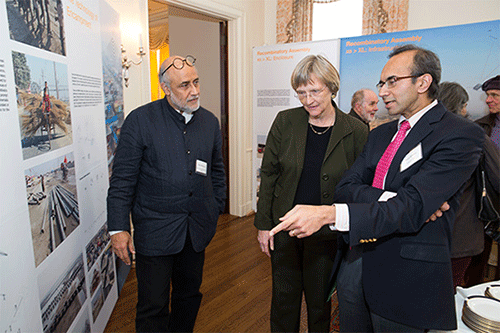Harvard Gazette: A Powerful Convergence
By Alvin Powell, Harvard Gazette

Photo courtesy of Jon Chase/Harvard Staff Photographer
Every 12 years, where the Ganges meets the Yamuna River in Allahabad, India, a city of millions appears, made entirely of just six things: canvas, corrugated metal, bamboo, nails, screws, and rope.
It is a massive undertaking, one whose impermanence is underlined by the fact that the site is inaccessible just months before, claimed by the river during monsoon floods, and dismantled shortly after.
The city is the site of the Kumbh Mela, a Hindu religious festival at which millions of pilgrims bathe at the confluence of two physical rivers, the Ganges and the Yamuna, and one spiritual one, the Saraswati.
At the last Kumbh Mela, in 2013, among the pilgrims was a team of some 50 people — faculty, students, and researchers — from Harvard. The team was making an in-depth study of a gathering that is not only a remarkable religious experience, but also a remarkable exercise in urban planning, public health, government administration, security, and commerce.
On Thursday, the Harvard Kumbh Mela team gathered at Loeb House to reflect on the experience and to launch a book on their findings, “Kumbh Mela: Mapping the Ephemeral Megacity,” as well as an exhibition by the same name.
Read the entire article on Harvard Gazette.
